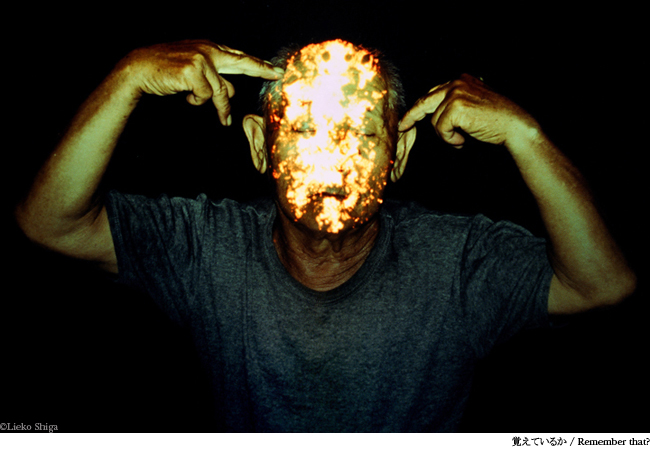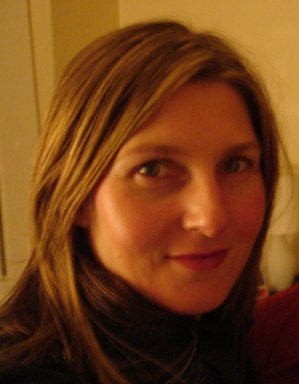Posted on August 15,2013
What the picture awakens our desire to see, as Lacan might put it, is exactly what it cannot show. This impotence is what gives it whatever specific power it has. 1

Be shot and die.The photographic paper is the evidence. The image printed on it had a smell, like something still fresh, as it appeared before my eyes. If the time axis of this world exists inside the photograph, then I am standing completely outside of it, and in order to escape from the uncertainty of the “present” which is both indecisive and elusive, I search desperately for some clue of an axis that definitely exists. Time moves forward towards my death, and the act of creating a moment of stationary time, as opposed to passing time, is something akin to prayer; the image establishes itself in line with a strong desire for and attachment to the existence of something opposed to self.
When photographing, I create a device to produce chance events, waiting to be shot by the camera at a moment that is impossible to predict in order to lose control over the images I may intentionally hold. The verb “shoot” is used to describe the action of taking a photograph, but the same word is also used to mean “kill”, therefore, therefore to be shot is to be resurrected through the action of killing. I can already visualize the finished photograph when I first encounter the subject or scene, or even before that. The time that exists before the photograph is taken, shoots me where I stand outside, and restores me to life.
The body is simply a medium, I kept a canary inside my stomach.
Look upon people or scenery that have been sacrificed through photography as offerings to the next world (Lieko Shiga, Canary, 2007) 2
I begin this blog entry by bringing together three aesthetic moments that, for me, express the particular qualities of pedagogy and desire that I have been exploring with Wanting Images so far. By placing these three moments in conversation – the quote from Mitchell, Shiga’s image Remember that? and her artistic statement for Canary – I am interested in what is provoked by their juxtaposition and with how this positioning shapes the experience of looking. More directly, I want to explore the free associative possibilities of an orientation to looking that makes room, as Mitchell (1996) phrases it, for pictures to awaken our desire to see while refusing to show. It is frequently the case that art criticism is encountered, whether deliberately or unwittingly, as a set of instructions in how to look and what to see; the artist statement is often taken up in much the same way. The result is a foreclosure rather than an opening of one’s experience of looking. Indeed, while some textual responses to images feel more didactic than pedagogical in their address, the invitation to look alongside the critic and/or the artist begs a willingness to be animated by their provocations. My effort with this entry is therefore to experiment with what happens when we read a theoretical concept, a photographic image and an artist statement together as a free associative activity.
My understanding of free association is gleaned from psychoanalytic approaches to the study of knowledge and interpretation. A strategy key to the analytic dialogue, free association is a speculative exercise of being with one’s thoughts, feelings and utterances without rhetorical purpose, direction or limitation. In psychoanalysis the instruction is simply for the analysand to utter whatever comes to mind. A unique narrative practice that breaks with the rules of temporality, free association is, according to Deborah Britzman, “a train of thought, a way of training thought to derail itself ” and so to “give up, however briefly, one’s sense of reality in the world, one’s sense of actuality and its limits, and one’s sense that language can be controlled…”3. Like trains, thoughts too can be derailed, but only if efforts are taken to skirt the confines of conscious control. In the analytic sense then, free association is an effort both to reveal and to get around the restrictive and/or repressive elements of thought. It does so by favoring the impulse or urge towards symbolization over its certitude. I’m curious as to the usefulness of this method for looking at images, particularly with regard to how a free associative orientation might open new ways of encountering oneself in relation to aesthetic objects. Returning to the three aesthetic moments that I introduced at the beginning of this blog entry, I now test of this method of looking by elaborating some of my own provisional thoughts.
I first encountered Lieko Shiga’s photograph Remember that?” in a virtual exhibit on Time LightBox, which featured selections from her 2007 series Canary. Flicking through the images I was struck by their enigmatic quality: reality and fiction seemed measured in increments of luminosity, meaning emerging somewhere along their blurred edge. Wanting to learn more about the photographs and how they were made, I visited Shiga’s website. While perusing the Canary project archive, I happened to notice that the title for Remember that? was different on the Time LightBox version: the interrogative had been rewritten as the declarative Remember that. I don’t know why my mind was drawn to this small detail and nor do I know which is the more accurate translation. The dropped question mark, however, completely altered my reading of the image. With Remember that? I interpreted the man’s gesture – index and middle finger pointed self-referentially towards his own skull – as directing the question of what it is that one can remember. The amorphous light colonizing (emanating from?) his face seemed poised to both consume and illuminate the memories that might be contained within. The declarative title, however, produced a more trenchant reading: “You. Must. Remember. That.” With this interpretation my gaze was drawn to the man’s slightly opened mouth, which appears to be either consuming or emitting some sort of glowing ectoplasmic entity. Following Mitchell’s understanding of the power of the image as resting in what it refuses to tell, what is it that Remember that? cannot show and yet awakens one’s desire to see? By allowing myself a free associative reading of the image in relation to the title text, I wonder if I came closer to limning the contours of this desire than had I first turned to the critical writing and interviews that illuminate the methods and thinking behind Shiga’s work.
Shiga’s artistic statement for Canary lends itself to a similar kind of reading. “Be shot and die,” she writes…“The photographic paper is the evidence.”4 With these two statements I get the impression of the photograph as the visual remainder of a moment in time wrenched onto paper: something has died and yet its inanimate trace lives on. Playing with the dual meaning of the verb “to shoot”, Shiga notes that it describes the action of taking both a photograph and a life. And yet this rather violent characterization seems to create a productive rather than destructive relation to her work: “The time that exists before the photograph is taken”, she relates, “shoots me where I stand outside, and restores me to life”. While I can’t be sure what any of this really means, what I find interesting is how her textual address models a particular way of thinking about looking. Because of its opacity, her artist statement tells me neither how to look nor what to see, siding instead with the power of the enigmatic form. “Look upon people or scenery that have been sacrificed through photography”, she tells us, “as offerings to the next world”. It is perhaps this “next world” to which we might be opened with a free associative orientation to looking.
The body is simply a medium, I kept a canary inside my stomach .5
1. W.J.T. Mitchell. What Do Pictures “Really” Want? October, 77. (Summer, 1996), 78 ↩
2. http://www.liekoshiga.com/canary_html/CANARY.html ↩
3. D.P. Britzman. 2003. Five excursions into free association, or just take the A train. Journal of the Canadian Association for Curriculum Studies 1(1), p. 28.↩
4. http://www.liekoshiga.com/canary_html/CANARY.html↩
5. http://www.liekoshiga.com/canary_html/CANARY.html ↩










